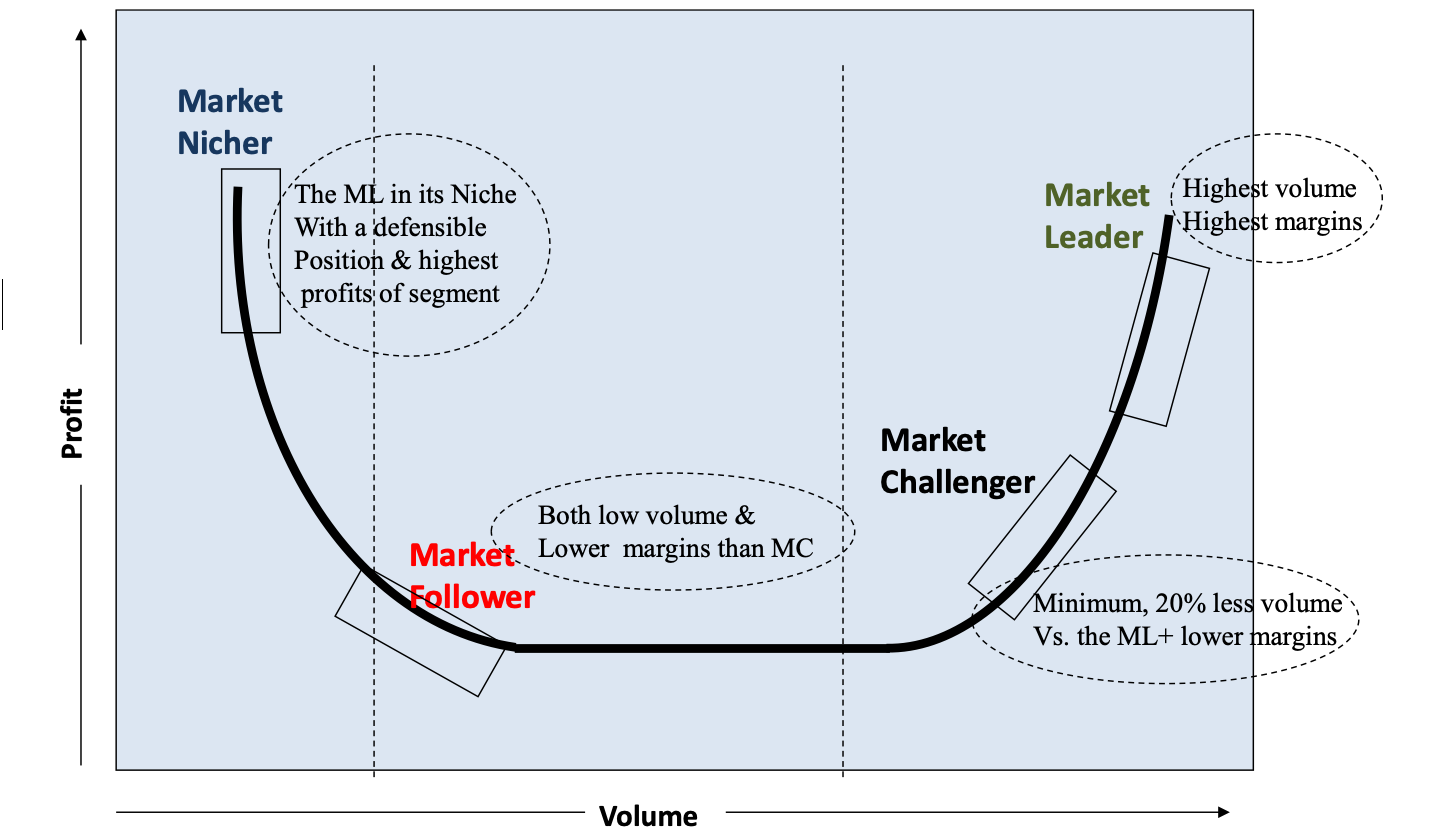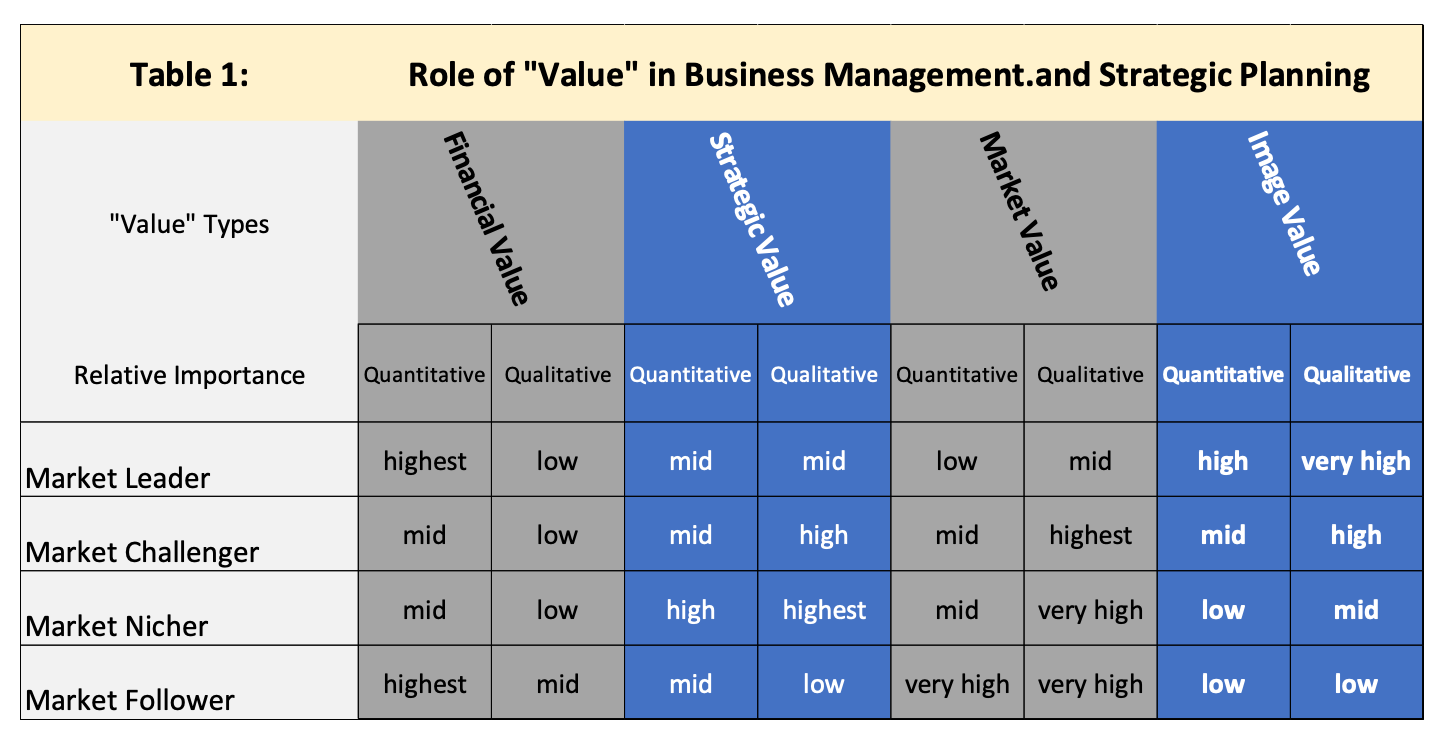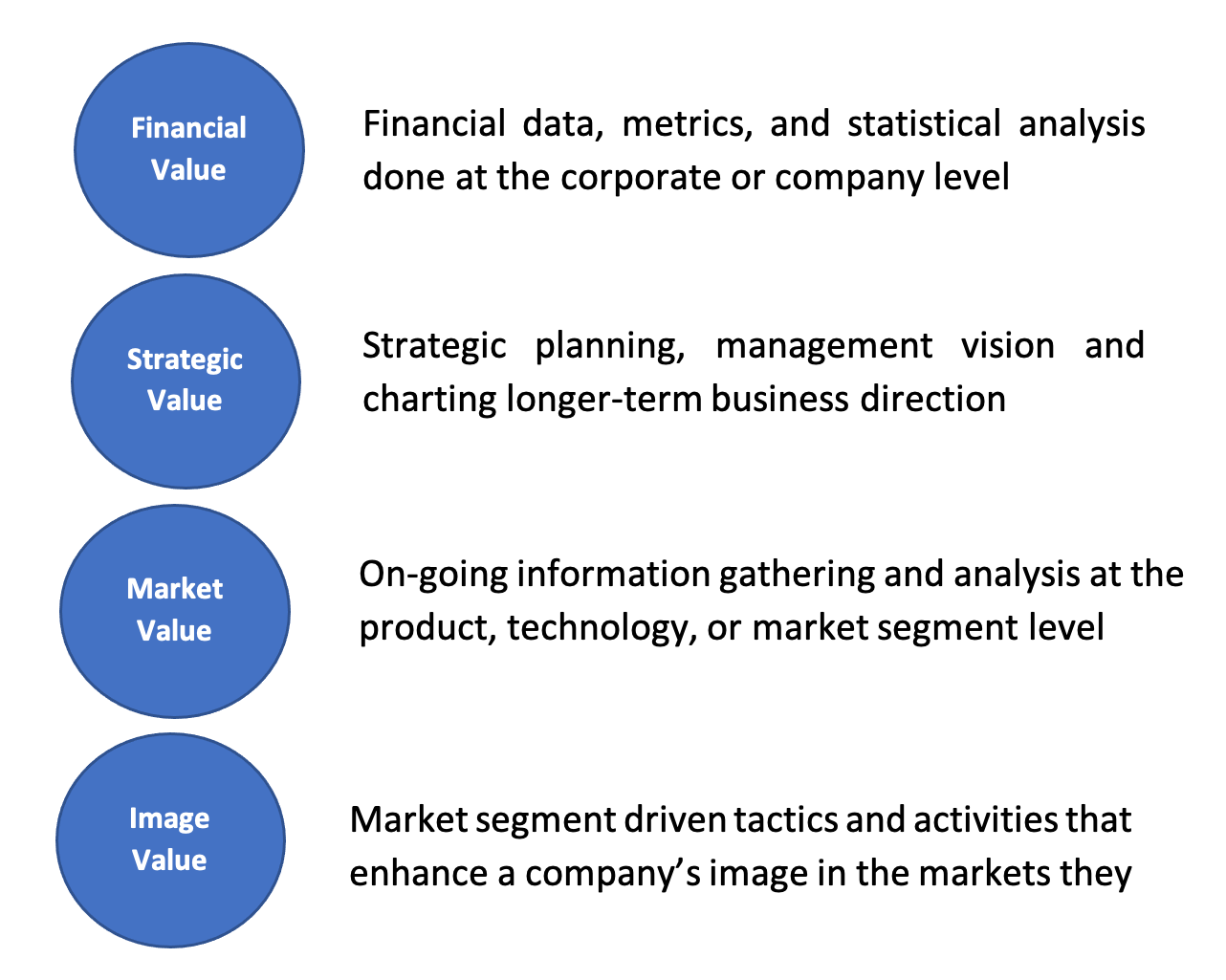Gary Shawhan, Contributing Editor
The CHEMARK Consulting Group
In last month’s Business Corner article, we discussed the “Sectors-of-Value” that exist in business management and strategic planning. These four sectors of value are shown below in Figure 1.
Figure 1: Sectors of “Value” Impacting Management and Strategic Planning
The four “value” sectors (Figure 1) play different roles and have a variable level of importance in management practice depending on the characteristics of the business itself. In this regard Porter’s Market Positioning Model, provides a valuable business tool that can be used to relate these “Value Sectors” to alternative business types and management styles. This article offers a perspective on “Value” and its importance in management practice in relation to the market position of a given business.
The Porter Market Positioning Model
Porter’s Market Positioning Model (Figure 2) identifies 4 types of businesses in terms of their strategic market position. The Porter model differentiates market position into these four (4) categories: Market leader; Market challenger; Market follower; and Market nicher.
The Porter model identifies the existing characteristics of the present business in terms of its market position. Its intent is to provide a template from which strategies can be developed and implemented to improve or strengthen the existing market position of a specific business.
Figure 2: Porter’s Market Positioning Chart

Market Leaders
A market leader has the highest market share and is the low-cost producer within each market segment where they have this distinction. The company has established itself with technology that is competitive if not leading edge and includes a broad array of products able to serve a variety of individual sub-market segments. Brand identify is high and geographic reach is broad.
Market Challengers
A market challenger is an innovator. This can include leadership in their technology, in their approach to the market, and/or in the way they manage products and company brand image in the marketplace. Market challengers have a high market share and are positioned to gain share against the market leader
Market NIchers
A market nicher has a unique, well defined market position. This strength is typically reflected in a combination of strategic advantages over their competition. Items such as: Technology, quality, service, market image, or brand identity.
Market Follower
Market followers are characterized as companies having mainly me-too, un-differentiated products. The competitive environment is crowded. Market followers do just that- they follow the market leader.
Market followers have little leverage in the marketplace to gain share excepting price and special situations such as favorable plant locations. Frequently they feed off those less attractive elements of the market where market leaders and challengers have much less interest.
The Elements of “Value” related to the Porter Model
Each “Value” element has a qualitative and a quantitative component. The ratio between these two vary with the actual business involved and its market position.
Table 1 provides a conceptual comparison between the four (4) “Value” elements and the market types identified in the Porter Strategic Positioning Model. Clearly, this is a generalization that will very to a greater or lesser extent depending on the specific business being considered.

Market leaders, in today’s coatings business, are normally large, global corporations with a number of individual businesses units. These companies are focused on the “Financial Value” element as a top priority. Shareholder equity, stock price, and other financial metrics are a primary consideration in business management practice.
With the added impact of analytics, and the ability to evaluate financial performance on a real-time basis, the result is often an increased focus on shorter-term results as opposed to long-term strategic planning where higher risk investments are involved. In this regard, “Financial Value” is much more of a quantitative activity as opposed to qualitative.
As a market leader “Image Value” plays a significant role in business management and is also a priority consideration. Market leaders need to focus on brand identity/trade name strength along with enhancement of the company’s overall market image. Depending on the proximity of the company’s business (within the supply chain) to the individual consumer, this issue can have a very high priority.
Market Challengers’ priority is to focus on strengthening their “Market Value”. This includes technology and market innovations that create differentiation for their company. The objective is to establish a favorable contrast to the market leader. This may include various qualitative elements such as quality, service, distribution, sales & marketing along with technology. Quantitatively pricing and improvements in manufacturing efficiencies (“Financial Value”) directed at capturing market share add to this list.
“Strategic Value” is also very important to market challengers in their efforts to gain share from the market leader. Strategic planning and longer-term strategies that involve some added risk are needed to grow market position against competition including the market leader. It also provides clarity and focus on those markets which management has targeted for revenue growth.
Brand and company “Image Value” are also key elements in business management for market challengers. Share gain is partly dependent on creating a favorable market image for your business and the market leader.
With the added impact of analytics, and the ability to evaluate financial performance on a real-time basis, the result is often an increased focus on shorter-term results as opposed to long-term strategic planning where higher risk investments are involved. In this regard, “Financial Value” is much more of a quantitative activity as opposed to qualitative..
Market Nicher
Market nichers #1 priority is to strengthen and sustain their differentiated market position going forward in the market spaces they serve. This places a top priority on “Strategic Value” and the important of vision and longer-term planning so that they can stay ahead of their competition. This effort is both qualitative and quantitative in its composition.
“Market Value” and the importance of continuing to gather competitive information and market intelligence is also a critical activity for market nichers. Since market nichers represent a narrower segment of the overall market, but one that is normally highly profitable, they must stay up to date on the competitive landscape to keep their edge.
“Image Value” for nichers is strong and widely recognized within the market space they serve. “Nichers protect their image by staying ahead of the competition and continuing the re-invent themselves through improvement in their products or services.
Nichers, by their nature, are very profitable. “Financial Value” is more focused on retention of profitability through continued innovation and differentiation against the market leader and market challengers. “Financial metrics, while monitored for performance, are not a primary driver for managing this type business.
Market Followers
Market followers’ highest priority is cost control and management of “Financial Value”. With a low market share and a customer/business composition that is more commodity oriented, market followers need to find different ways to obtain new business and retain their current customers since their products have little or no level of differentiation.
“Market Value” is the other element of value important to market followers. Gathering, monitoring, and analyzing market information that is important to protecting the companies market position is key. Identifying other channels-to-market, alternative distributors, identifying geographies where sales growth can be obtained are among the tactics important to market followers.

